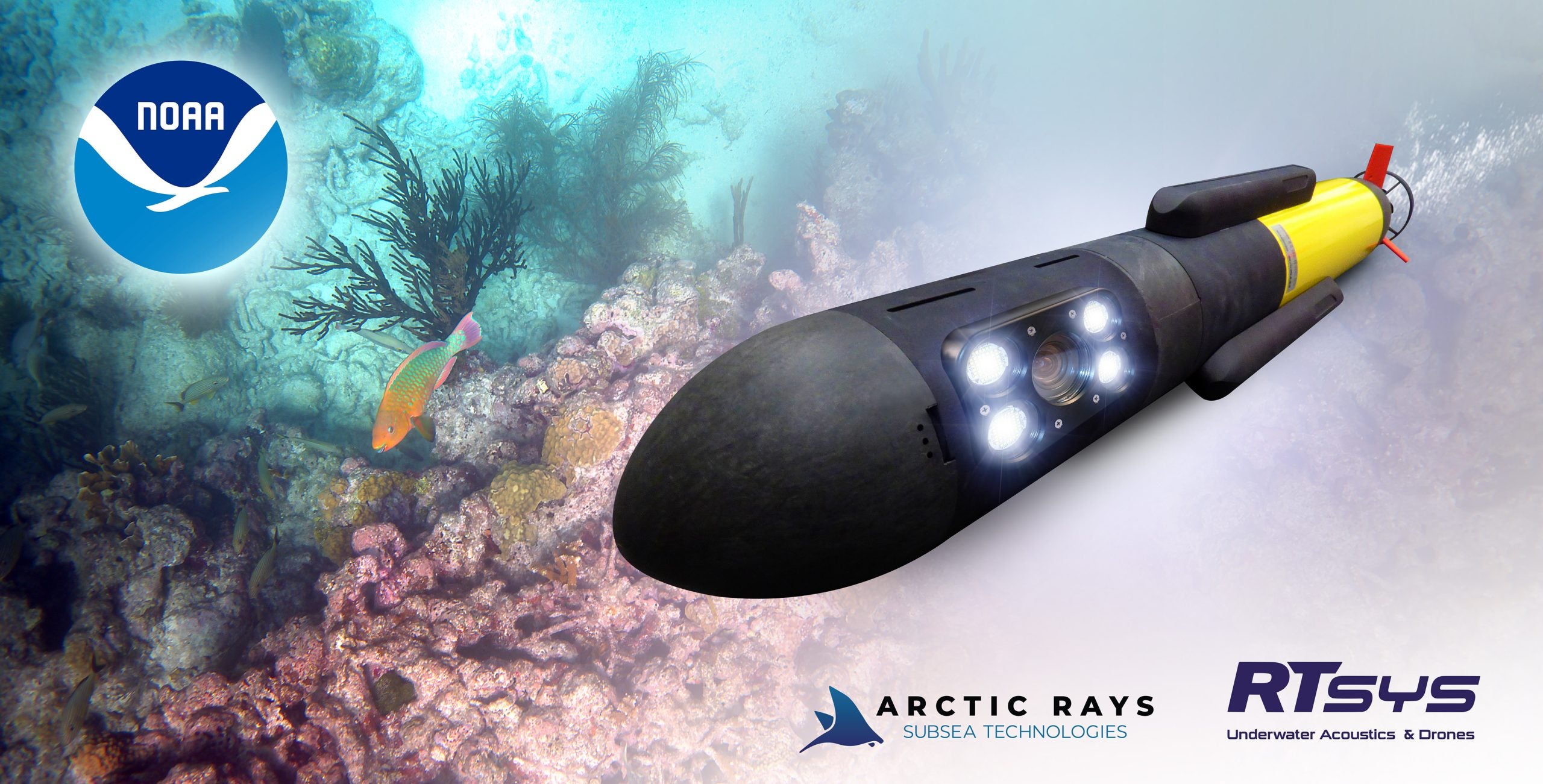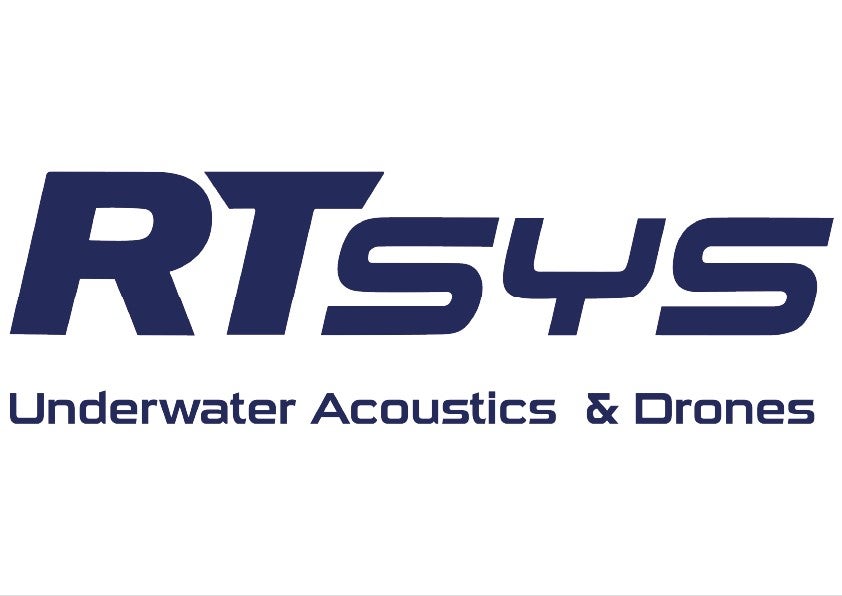
In a collaboration among NOAA’s National Centers for Coastal Ocean Science (NCCOS), AUV manufacturer RTsys and subsea imaging technology manufacturer Arctic Rays, the NemoSens SwordFish is designed to revolutionize ocean exploration and research by enhancing NOAA’s efforts to study and understand the seabed.
NCCOS will use these vehicles to collect high-resolution digital images of the seabed as deep as 300 meters inside the United States Exclusive Economic Zone. These unique vehicles fill a technological gap and a growing need to provide sufficient images cost-effectively to characterize ecosystems and inform decisions about offshore energy development, sustainable fisheries and protecting special places in the ocean.
The state-of-the-art micro underwater vehicle will be equipped with SwordFish, an imaging payload developed by Arctic Rays. A fully integrated camera + lighting solution, SwordFish enables turnkey imaging acquisition for seafloor survey. The imaging payload features geo-referenced digital capture of 4K UHD video and still images with high-output dual-mode lighting and an onboard CPU and SSD storage.
This payload is integrated into the NemoSens micro AUV, developed by RTsys. The modular vehicle utilizes sustainable energy sources, minimizing its environmental footprint and allowing for extended mission durations.
“We, in RTsys, are truly honored to have been chosen by NOAA’s National Centers for Coastal Ocean Science to elevate the research in marine biology, oceanography, and environmental science” says Pierre-Alexandre Caux, Business Director of RTsys. “Upgrading NemoSens for studying marine life, mapping ocean floors, and collecting data on underwater ecosystems widens once again the capability of this unique and versatile micro AUV. The democratization of our combined expertise and shared technology will definitely lead to a more comprehensive understanding of our oceans and marine environments.”
“The spirit of partnership in this project allows us to accomplish much more together,” says Dirk Fieberg, General Manager of Arctic Rays. “The shared goal of exploring our oceans’ seabeds to inform sustainability measures will no doubt prove beneficial to the scientific community.”
The new NemoSens SwordFish is tailored to gather crucial baseline data about the seafloor, and track changes to these ecosystems over time. It will play a vital role in NOAA’s ongoing mission to protect and preserve our oceans and support a vibrant blue economy. This plan is part of the collaborators’ commitment to fostering a sustainable future for our planet. By joining forces, NCCOS, RTsysand Arctic Rays aim to better understand our oceans, mitigate climate change and protect marine life.
Three primary units are scheduled for delivery to NOAA’s lab in Beaufort, North Carolina, early 2024.
About NOAA’s National Centers for Coastal Ocean Science
The National Oceanic and Atmospheric Administration (NOAA) formed the National Centers for Coastal Ocean Science (NCCOS) in 1999 as the focal point for NOAA’s coastal ocean science efforts. NCCOS helps NOAA meet its coastal stewardship and management responsibilities, and provide coastal managers with the scientific information necessary to decide how best to protect environmental resources and public health, preserve valued habitats and improve the way communities interact with coastal ecosystems.
About RTsys
RTSYS is a specialist in underwater acoustics and autonomous underwater vehicles (AUV). Products are based on RTSYS innovation and partnership with renowned research laboratories. The company develops anti-submarine warfare systems (ASW), portable equipments for EOD divers and complete environment in mine countermeasures operations (MCM), autonomous underwater vehicles (AUV) and passive acoustic monitoring systems (PAM) such as acoustic recorders, buoys, datalogger and underwater monitoring stations.
About Arctic Rays
Arctic Rays specializes in deep-sea lighting, imaging and surveillance systems and other subsea technologies, custom-engineered to the demanding requirements of deep ocean use on AUVs, ROVs, manned submersibles and other offshore and underwater structures.

